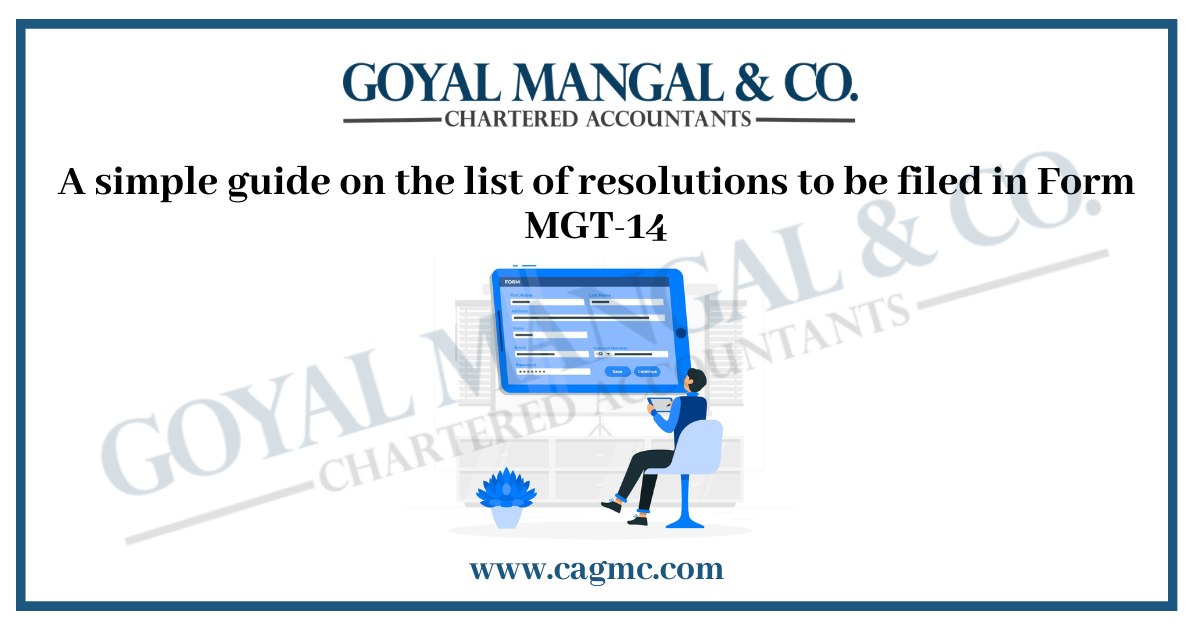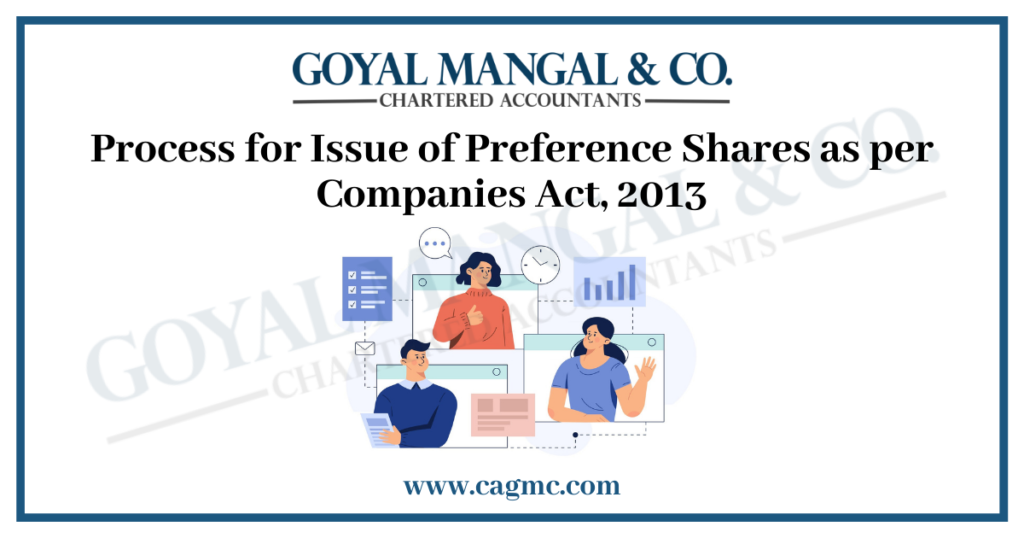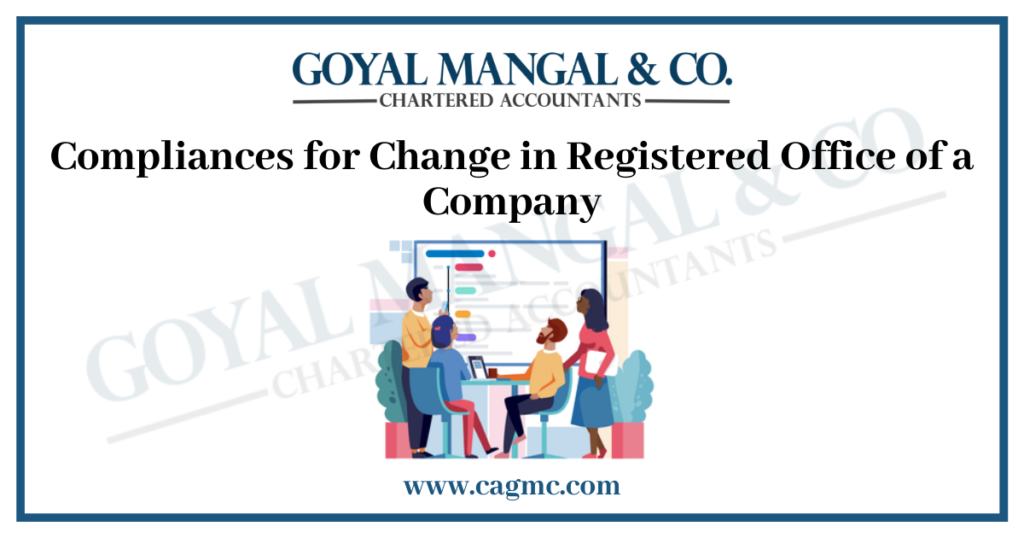
Connecting and being up-to-date with the regulatory structure is potential for the smooth functioning of any business entity. One of the essential terms, this demands attention to file Resolutions in MGT-14 Form. As a significant need as per the Companies Act, 2013, MGT 14 Form is a way by which key decisions and actions considered through a company are officially recorded, and submitted to regulatory authorities. The current article gives clear and simple guidance on the list of Resolutions to be filed in Form MGT-14.
Table of Content
Short Note on MGT-14 Form
The MGT-14 Form is a specific form given by the Companies Act, 2013. It provides the filing of resolutions and agreements with the Registrar of Companies (RoC). When certain actions or decisions are considered by a company, then there will be a need for a certain shareholder’s permission or involvement in alterations to the company’s framework. These all things must be required to be officially recorded and filed with the RoC.
Section and Rule Number
E-Form MGT-14 is needed to be filed in accordance with Sections 94(1), 117(1), and 192 of the Companies Act, 1956, and the rules established thereunder, which are copied for your convenience.
Section 94(1) of the Companies Act, 2013:
The registers needed to be kept and maintained by a company under section 88, as well as copies of the annual return submitted under section 92, must be retained at the company’s registered office:
If approved by a special resolution passed at a general meeting of the company and the Registrar has been given a copy of the proposed special resolution in advance, such registers or copies of returns may also be kept in any other place in India where more than one-tenth of the total number of members entered in the register of members reside:
Provided, however, that the term for which the registrations, reports, and records must be retained should be as provided.
Section 117 of the Companies Act, 2013:
(1)” A copy of every resolution or any agreement, in respect of matters specified in sub-section (3) together with the explanatory statement under section 102, if any, annexed to the notice calling the meeting in which the resolution is proposed, shall be filed with the Registrar within thirty days of the passing or making thereof in such manner and with such fees as may be prescribed within the time specified under section 403: Provided that the copy of every resolution which has the effect of altering the articles and the copy of every agreement referred to in sub-section (3) shall be embodied in or annexed to every copy of the articles issued after passing of the resolution or making of the agreement. “
Certain significant points regarding the Form MGT-14:
- Purpose: The primary purpose of Form MGT-14 is to report various resolutions and agreements that are essential for the functioning and legal compliance of a company.
- Mandatory Filing: Certain types of resolutions, typically those deemed significant or affecting the company’s structure, are required to be filed through Form MGT-14. Filing ensures that the decisions are officially recognized by the regulatory authorities.
- Timely Submission: Companies are required to submit Form MGT-14 within 30 days of passing the resolution in a Board or General Meeting. Timely submission is crucial to avoid penalties and ensure compliance with the Companies Act.
- Contents: The form includes details about the company, the type of resolution, the date of the resolution, and attachments such as the resolution passed and any explanatory statement.
- Approval Authority: The form is submitted to the RoC for approval. The RoC examines the documents to ensure they comply with legal requirements.
- Types of Resolutions: Resolutions related to changes in the company’s capital, alteration of the company’s object clause, appointment or resignation of directors, appointment or resignation of auditors, approval of financial statements, and various other significant decisions fall under the purview of Form MGT-14.
How to file MGT-14 Form on V3 Portal?
To file Form MGT-14 on V3 portal are:
- Access to MCA Portal: To visit the MCA Portal, log in with your credentials. In case one doesn’t have an account, then one is required to register and create one.
- Navigate to the MGT-14 Form: After login, go to the “MCA Services” tab. In the section of “e-filing”, go to the “File e-form” section.
- Choose the Form MGT-14: From the available list of e-forms, choose the Form “MGT-14”.
- Fill in company information: Fill in the required information details like Corporate Identification Number (CIN), company type, etc.
- Documents attached: Need to upload necessary documents like any explanatory statement, a resolution passed by a company and other necessary attachments.
- Fee payment: Pay the given filing fees which can be based on authorized capital of the company.
- Submission of form: After filling up the form, it is important to make sure that all documents are attached and then submit the form.
- Confirmation of payment: After successful submission, you will receive an acknowledgement receipt with a Service Request Number (SRN).
- Verification and permission: The RoC will review the form MGT-14. Once the form is approved, you will receive an approval message.
- Check status: One can check the status of filing by using the SRN from the MGT-14 MCA Portal.
List of Resolutions to be filed in MGT-14 Form
In India, the MGT-14 Form is a significant document as per the Companies Act, 2013, for filing resolutions and agreements to the Registrar of Companies (RoC). Here we are going to discuss when MGT-14 is required to be filed:
- Entrenchment of articles
- Change of the registered office outside the limit of the city/town/village where the registered office is situated.
- Alteration in MOA except in case of change in name, registered office or object clause
- Alteration in memorandum for change in registered office
- Alteration in memorandum for change in name
- Alteration in object clause
- Alteration of Articles
- Conversion from public to private company
- Conversion from private to public company
- Approval of variation of rights of special classes of shares
- Issue of sweat equity shares
- Issue of further shares to employees under a scheme of employees’ stock option
- Issue further shares to persons (whether or not including existing shareholders or employees)
- To reduce the share capital
- Approval of scheme for providing financial assistance for purchase of its own shares
- Purchase the company’s own shares or specified securities
- Issue of debentures with an option to convert such debentures into shares
- Appointment of more than fifteen directors
- Reappointment of Independent director after a term of 5 consecutive years
- Lesser number of directorships
- To fix remuneration payable to directors including managing director or whole time director or manager
- Appointment of Managing Director, Whole Time Director or Manager
- Application to Registrar to remove name of company from register of companies
- To adopt table F in schedule
- Application to Registrar for obtaining the status of Dormant company
- Variation in terms of Contract referred to in the prospectus or objects for which the prospectus was issued
- Registers and returns to be kept at a place other than where registered office is situated
- Removal of auditor before the expiry of his term
- Resolutions passed ¡n pursuance of exercise of powers of Board of Directors
- Sell, lease or otherwise disposal of the whole, or substantially the whole, of the undertaking
- Moneys to be borrowed including moneys already borrowed exceed sum of paid up capital and free reserves
- Approval of scheme to give any loan to a managing director or a whole time director
- Inter corporate loans and investments or guarantee or security in excess of the prescribed limits
- Authorization for related party transactions
- To request the Government to investigate the affairs of the company and to appoint inspectors
- Sanction of scheme for revival or rehabilitation of sick company
- To apply to a court to wind- up the company
- To wind up the company voluntarily
- Exercise of certain powers by liquidator of court in Voluntary winding up
- Authorizing liquidator to sell the property of the company, purchase of members’ interest etc.
- Approval of arrangement with creditors
- Exercise of certain powers by liquidator of court in Voluntary winding up with prior approval of Tribunal
- Disposal of books and papers of company
- Change in objects of the company in case company has unutilized amount of money raised through issue of prospectus
- Issue of Global Depository Receipts in any foreign country
- Removal of retiring auditor not to be reappointed at Annual General Meeting
- Remit or give time for repayment of any debt due from a director
- Invest otherwise in trust securities the amount of compensation received by it as a result of any merger or amalgamation
- Investigation into the affairs of the company by Serious Fraud Investigation Office
- Agreement relating to appointment, reappointment or renewal of appointment or variation of terms of appointment of a managing director
- Others under Companies Act,1956
- Others under Companies Act,2013
Takeaway
At last, but not least, the process of filing resolutions in Form MGT-14 plays a significant role in upholding the regulatory integrity of a company. As we have studied, these resolutions provide a framed documentation of crucial decisions and actions. Furthermore, the list of resolutions to be filed in Form MGT-14 is not generally a bureaucratic activity; however, it is a strategic tool, which protects the shareholder’s, company’s and director’s interests at large. By adopting these filing needs, businesses can demonstrate their commitment to regulatory compliance, enhancing their foundation for sustainable development in the quick growth of the corporate world.


